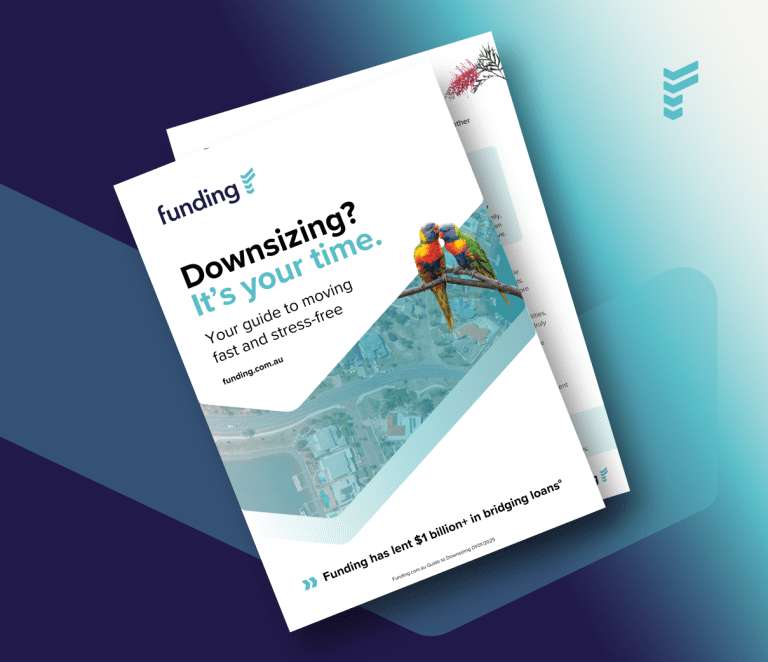What is a bridging loan?
A bridging loan is a short-term financing solution designed to bridge the gap between purchasing a new property and selling an existing one. For aspiring property investors, a bridging loan can be an effective way to secure an investment property quickly, even if they have not yet sold another property or need immediate access to funds. Bridging loans are typically repaid once the investor’s existing property is sold or when longer-term financing is secured.
Key features of bridging loans
-
- Short-term duration: Typically ranges from 1 to 24 months offering flexibility based on the investor’s needs.
-
- Quick access to funds: Allows investors to act swiftly on property purchases, especially in competitive markets.
-
- Interest-only payments: Many bridging loans offer interest-only payments during the loan term, reducing immediate financial pressure.
-
- Flexible repayment options: The loan is usually repaid once the investor’s existing property is sold or refinanced.
How can bridging loans support investment property financing?
Bridging loans offer several advantages that make them an attractive financing option for aspiring property investors. Here’s how they can help you secure and finance your investment property:
Quick access to capital
In the competitive real estate market, timing is crucial. Bridging loans provide quick access to capital, enabling aspiring investors to secure investment properties before they are sold to others. Whether you’ve found a property with high potential for returns or need to act fast to lock in a good deal, a bridging loan can provide the necessary funds without waiting for the sale of another property.
Flexibility in property transactions
Bridging loans offer flexibility in managing property transactions. For instance, if you are in the process of selling one property but don’t want to miss out on purchasing another, a bridging loan can cover the gap. This allows you to take advantage of investment opportunities without the need to wait for your current property to sell, ensuring that your property portfolio continues to grow.
Managing cash flow and renovation costs
For aspiring investors who plan to renovate an investment property before renting or selling it, a bridging loan can provide the funds needed to cover renovation costs. This can be particularly beneficial for properties that require significant work to maximise their market value. By using a bridging loan, you can finance the purchase and renovation of the property simultaneously, ensuring that it is ready for the market as soon as possible.
Bridging the financing gap
If you’re transitioning from one investment property to another or expanding your portfolio, a bridging loan can help bridge the financing gap. This ensures that you have the liquidity needed to manage multiple properties without the financial strain of waiting for sales to be finalised or for long-term financing to be approved.
How to apply for a bridging loan with Funding
At Funding, we understand the unique challenges faced by aspiring property investors. Our bridging loans are designed to provide the flexibility and support you need to secure and finance your investment property. Here’s how to apply for a bridging loan with Funding:
Step 1: Assess your investment goals
Before applying for a bridging loan, take the time to assess your investment goals. Consider the following:
-
- Type of property: What type of investment property are you looking to purchase—residential, commercial, or mixed-use?
-
- Loan amount: Calculate the total amount required to purchase and, if necessary, renovate the property, including associated costs such as interest and fees.
-
- Repayment plan: Consider your strategy for repaying the loan, whether through the sale of an existing property, rental income, or refinancing.
Step 2: Prepare your documentation
When applying for a bridging loan, you’ll need to provide the lender with various documents to support your application. These may include:
-
- Details of the property: Information about the investment property you plan to purchase, including its value and potential returns.
-
- Financial statements: Recent income statements, balance sheets, and cash flow statements.
-
- Credit history: A credit report for you as the investor, and if applicable, for your business.
-
- Sale agreements or refinancing plans: Documentation showing your plan for repaying the bridging loan, such as a contract of sale for an existing property.
Step 3: Submit your application for investment property financing
Once you’ve gathered all the necessary documentation, you can submit your loan application to Funding. Our streamlined application process ensures quick and efficient service, allowing you to focus on securing your investment property while we handle the financing.
Step 4: Loan assessment and approval
After submitting your application, our team at Funding will assess your loan request based on factors such as the property’s value, your financial health, and your repayment plan. We aim to provide approval decisions promptly, often within a few days, so you can access the funds you need without delay.
Step 5: Disbursement and repayment
Once your loan is approved, the funds will be disbursed according to the agreed terms. You can then use the funds to purchase and, if necessary, renovate the investment property. Repayments will be structured according to the loan agreement, with options for fixed or variable interest rates.
Case study: How a bridging loan helped an aspiring investor secure a property
Consider the example of Patrick, an aspiring property investor in Melbourne who had his eye on a promising residential property in a rapidly growing suburb. However, Patrick was still in the process of selling his current investment property and didn’t want to miss out on the new opportunity. He approached Funding for a bridging loan to secure the new property while awaiting the sale of his existing one.
With the funds provided by the bridging loan, Patrick was able to:
-
- Purchase the new property quickly: The bridging loan allowed Patrick to secure the investment property without waiting for the sale of his current property, ensuring he didn’t lose out to another buyer.
-
- Finance minor renovations: Patrick used part of the loan to make minor renovations to the new property, increasing its rental appeal and market value.
-
- Manage cash flow: The interest-only payment structure of the bridging loan helped Patrick manage his cash flow during the transition period.
Once James’s existing property was sold, he used the proceeds to repay the bridging loan in full. This strategy enabled him to expand his property portfolio without financial strain, setting him up for future investment success.
Get started
Bridging loans are a powerful tool for aspiring property investors looking to navigate the complexities of the real estate market and secure investment properties with confidence. By providing quick access to capital, offering flexibility in property transactions, and helping manage renovation costs and cash flow, bridging loans can empower you to achieve your investment goals.
By leveraging the right financial tools and strategies, aspiring investors can confidently navigate the real estate market and unlock new opportunities for growth and success in property investment.
At Funding, we offer flexible and tailored bridging loan solutions designed to meet the unique needs of aspiring investors. Whether you’re looking to purchase your first investment property or expand your portfolio, our bridging loans can provide the support you need to succeed.
Learn more
For additional resources and information on bridging loans and property investment strategies, explore these helpful links:


